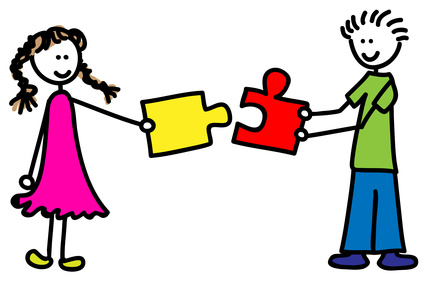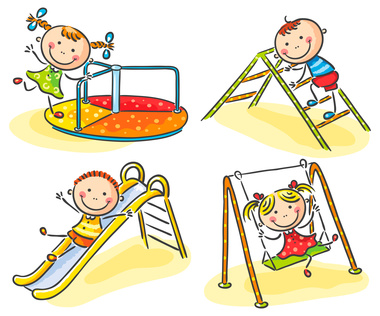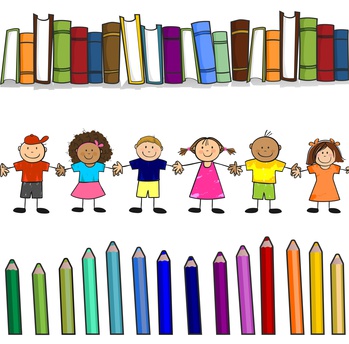Developmental Psychology
Attachment Theories
Definitions of attachment:
- Attachment is a close emotional relationship between two persons, characterised by mutual
affection and a desire to maintain closeness
(Shaffer 1993) - An affectional tie that one person or animal forms between himself and another specific one – a tie that binds them together in space and endures over time." (Ainsworth)
- Lasting psychological connectedness between human beings. (Bowlby)
- A deep and lasting emotional bond between two people
| Theory | Explanation | Studies supporting theory | Studies challenging theory | |
|---|---|---|---|---|
| Freud's Psychodynamic approach |
Infants become attached to their caregivers
(usually the mother) because the caregiver
satisfies all the infant's instinctual needs
during feeding time (food, security, oral gratification).
|
Freud views originate from his theory on childhood experiences: psychosexual stages of developement Freud (1924) | Harlow (1959) study on rhesus monkeys Lorenz (1935) study on goslings Schaffer & Emerson (1964) study of Scottish infants |
|
| Learning theory | Behaviour is learnt through classical conditioning: food brings sense of pleasure (unconditional stimulus & response), after a while the baby associates the food-giver (mother) with this pleasure (conditional stimulus & response). The baby becomes attached to the mother whether or not the food is provided. |
Dollard and Miller (1950) focuses on 'motivation' – babies are driven to seek food to satisfy hunger. Attachment is reinforced as babies are rewarded with food (operant conditioning) | Harlow (1959) study on rhesus monkeys Lorenz (1935) study on goslings Schaffer & Emerson (1964) study of Scottish infants. | |
| Bowlby:
Evolutionary perspective Evolutionary perspective Evolutionary perspective Monotropy Critical period Maternal deprivation Hypothesis Bolwby Bolwby Bolwby |
Evolutionary perspective: attachment has evolved because it promotes survival and safety:
desire to stay close to another person Promotes emotional relationship: Learning how to develop secure and healthy relationship Monotropy: Infants attach themselves to one primary caregiver only, essentially the mother. Critical period: Attachment must be formed within 12 months, otherwise infant risk becoming insecure. Maternal deprivation: Disruption of bonding between mother and baby If a separation occurs between mother and infant within the first few years of the child�s life, the bond would be irreversibly broken, leading to severe emotional consequences for the infant in later life. Efffect : aggression, depression, deliquency, apathy (showing no feelings for others) |
Bowlby 1951), (1953),(1958), (1969), (1988) Bowlby (1944) claimed that there was an association between early deprivation and delinquency. Tronick et al (1992) study of the African group Efe, from Zaire found that infants usually sleep with their own mother at night, even though they were looked after and even breastfed by different women. Findings suggest that infants still show preference for their mothers , a single primary attachment. Lorenz (1935) study: attachment occurred immediately (imprinting). Hess (1958) study: ducks showed the strongest following response (imprinting) about 16 hours after hatching and that after this period, the imprint was irreversible. 32 hours after hatching, the ducklings showed almost no ability to acquire a following response if they hadn't acquired one already. |
Schaffer & Emerson (1964) challenges the idea of monotropy. Their study shows that babies could form several attachments simultaneously and that the
main attachment was not always to the mother. Given the right responsiveness to the baby, it can attach to any carer.
Schafer & Emerson (1964) In the first 6 months, 65% of infants were attached to their mother. After 8 months, infants had multiple attachments. But the strongest was with the mother. Over 30% of infants were attached to their fathers who were not their primary caregiver. Hodges & Tizard (1989): researchers showed that children can form attachments after 3 years of age despite Bowlby�s claim that this would be outside the critical period. |
Separation, deprivation and privation
| Explanation | Effects | Evidence | |
|---|---|---|---|
| Separation | Separation refers to attachment broken for a short period of time e.g. attending nurseries. | If child receives suitable replacement emotional care during separation, then emotional bonds are not disrupted and no harm may occur. | Ainsworth et al (1978) study found that caregivers who respond sensitively to infants needs and who interacts with infants tend to form a secure bond with their infants. In contrast infants were insecurely attached to mothers who responded less sensitively. |
| Deprivation |
Refers to loss of separation from an attachment figure. Disruption of emotional bond between baby and carer. A child is denied emotional care in the short term or long term which result in breaking of emotional bonds (attachment) |
Suffer emotional distress Feels rejection Feels anger and fear Feels insecure Refuse to eat or drink Possibly learn to mistrust |
Robertson and Robertson (1952) Robertson and Bowlby (1952) Robertson and Robertson (1989) study found that 17 month old John who was place in a residential nursery for 9 days experienced distress and rejected his mother upon reunion and continued for months to show outburst of anger towards his mother. |
| Privation | Privations defined as never having formed any attachments to any individuals | Unsociable, attention-seeking, clinging and dependent behaviour. Later, unable to form relationships, follow rules, lack of guilt and engage in anti-social behaviour such as delinquency. | Rutter (1981) – studies of institutionally reared children actually demonstrate the effects of privation (failing to form a bond) rather than deprivation (separation). Privation is the failure to establish a bond with any individual and, given the importance placed on this first relationship by most researchers, this would be expected to have damaging consequences for the child in later life. |
| Maternal deprivation hypothes | Refers to long-term effects of deprivation | Maternal deprivation in early years may cause psychological problem in later life Damage the emotional development of a child: confidence, insecure, apathetic, lack of guilt or remorse, depression Social problems in adult hood e.g divorce, anti-social behaviour, engage in crime, psychopath |
Bowlby(1944) Forty four juvenile thieves 32% of the thieves were affectionless psychopaths lacking a social conscience 86% of the above had experienced early separation 17% lacking affectionless psychopathy had been maternally deprived. |
Discussion forum
Do you agree with Bowlby?Are social problem or individual's personality influenced by deprivation of maternal care?
Are children deprived of maternal attachment prone to failures?
Are children who are securely attached to parents are always successful in life?
Are children who are orphans grow up to be unsuccessfull, socially, economically and emotionally and psychologically
Can detachment be reversed?
Critism of Bowlby's theories
Flaws in the design method used to conduct Bowlby's study of 44 thieves : Bowlby relied on retrospective data where he found a sample of 'thieves' and then looked back for evidence of separation.Retrospective data may be unreliable because prople do not recollect past events accurately
Bowlby should have compared a group of youngsters who had suffered MD with a matched group who had not. If he had found a difference in outcomes between the groups he would have had much more grounds for claiming that the delinquent behaviour was the due to early separation.
Bowlby study does not show 'cause and effect' but only a correlation between maternal deprivation and psychological, emotional and social behaviour of seperation. Child's circumstances may explain adverse effects.
Robertson & Robertson studies showed that short–term separtion of children from their mothers would manifest in distress and despair which were evidence of bond disruption. But other factors could not ruled out possibility that the distress may have been caused by the fact that babies were not accustomed to new surroundings in which the babies studies were conducted.
If children have good substitute emotional care during separation from mother, then any adverse effects experienced by baby may be minimised. Using animals to support Bowlby's studies should be viewed with sceptism and interpreted carefully as humans are more complex species and their behaviour cannot be simplified by looking at animal studies.
REFERENCES
Ainsworth et al (1978). Patterns of attachment: A psychological study of the strange situatuion. Hillside, NJ: Lawrence Earlbaum Associates Inc
Bowlby, J (1944). Forty-four jevenile thieves: Their characters and home life. International Jounranl of Psycho-Analysis 25, 19-52
and 107-127
Bowlby, J (1951). Maternal care and mental health. Geeva, Switzerland: Worl Health Orgaisation.
Bowlby, J (1953). Child Care and growth of love. Harmondsworth, UK : Penguine
Bowlby, J (1969). Attachment of love, Vol1: Attachment. London : Hogarth
Bowlby, J. (1969). Attachment. New York: Basic Books.
Bowlby, J (1988). A secure base: Clinical applications of attachment theory. London: Routledge.
Dollard J., & Miller, N. E. Personality and psychotherapy. New York: McGraw-Hill, 1950.
Freud, S. (1920) �Infantile Sexuality� in On Metapsychology : The Penguin Freud Library Vol 7 London : Penguin Books 1977
Freud, S. (1923) �The Ego and the Id� in On Sexuality : The Penguin Freud Library Vol 11 London : Penguin Books 1984 pp339-408
Freud, A. (1960), Discussion of Dr, John Bowlby�s paper. Psychoanalytic Study of the Child, 15,53-62.
Hodges, J., & Tizard, B. (1989). Social and family relationships of ex-instutional adolescents. Journal of child psychology and psychiatry, 30, 77-97
Harlow, H.F. (1959). Love in infant monkeys. Scientific American, 200, 68-74
Harlow, H. F. (1961). The development of affectional patterns in infant monkeys. In B. M. Foss (Ed,), Determinants of infant behaviour (pp. 75-97). London: Methuen.
Harlow, H. F., & Zimmermann, R. R. (1958). The development of affective responsiveness in infant monkeys. Proceedings of the American Philosophical Society, 102, 501 -509.
Hess, E.H., 1958. Imprinting in animals. publisher not identified.
Lamb, M. E. (1978). Qualitative aspects of mother-infant and father-infant attachments in the
second year of life. Infant Behavior and Development, 1, 265-275.
Lorenz, K. Z. (1935). Der Kumpan in der Umwelt des Vogels (The companion in the bird�s
world). Journal fur Ornithologie, 83, 137-213. (Abbreviated English translation published
1937 in Auk, 54, 245-273.)
Robertson, J. (1953a). A two-year-old goes to hospital (Film). Tavistock Child Development
Research Unit, London (available through the Penn State Audiovisual Services, University Park, PA).
Robertson, J. (1953b). Some responses of young children to loss of maternal care. Nursing Care, 49, 382- 386.
Robertson, J. & Bowlby, J. (1952), Responses of young children to separation from their mothers. Courrier of
the International Children�s Centre, Paris, II, 131-140.
Robertson, j., & Robertson , J. (1971). Young chuildren in brief separation. Psychoanalytic Study of the Child, 26, 264-315
Rutter, M. (1981) Maternal Deprivation Reassessed (Second edition) Harmondsworth : Penguin Books
Schaffer, H, R., & Emerson, P. F. (1964). The development of social attachments in infancy.
Monographs of the Society for Research in Child Development, 29 (Serial No. 94).
Tronick, E.Z., Morelli, G.A. and Ivey, P.K., 1992. The Efe forager infant and toddler's pattern of social relationships:
Multiple and simultaneous. Developmental Psychology, 28(4), p.568-577
Tronick, E.Z., 1992. Introduction: Cross-cultural studies of development. Developmental Psychology, 28(4), p.566.
Additional reading:
Goldfarb, W. (1943). The effects of early institutional care on adolescent personality. Journal of Experimental Education, 14, 441-447.
Goldfarb, W. (1945). Psychological privation in infancy and subsequent adjustment. American Journal of Orthopsychiatry, 15, 247-255.
Greenberg, M. T., & Marvin, R. 5. (1979). Attachment patterns in profoundly deaf preschool children. Merrill-Palmer Quarterly, 25, 265-279
Greenberg, M. T., & Speltz, M. L. (1988). Attachment and the ontogeny of conduct problems. In
3. Belsky & T. Nezworski (Eds.), Clinical implications of attachment (pp. 177-218).
Grossmann, K. F., & Grossmann, K. (1990). The wider concept of attachment in cross-cultural
research. Human Development, 13, 31 -47.
Kaplan, N. (1984). Internal representations of separation experiences in six-year-olds: Related
to actual experiences of separation. Unpublished master�s thesis, University of California,
Berkeley.
Klagsbrun, M., & Bowlby, J. (1976). Responses to separation from parents: A clinical test for
young children.
Spitz, R. A. (1960). Discussion of Dr. John Bowlby�s paper. Psychoanalytic Study of the Child, 15, 85-208.
Freud, S. (1959). Inhibitions, symptoms and anxiety. In 3. Strachey (Ed. and Trans.), The
standard edition of the complete psychological works of Sigmund Freud (Vol. 20, pp.
77-175). London: Hogarth Press. (Original work published 1926).
Freud, S. (1961). The ego and the id, In 3. Strachey (Ed. and Trans.), The standard edition of the
complete psychological works of Sigmund Freud (Vol. 19, pp. 3- 66). London: Hogarth
Press. (Original work published 1923).






